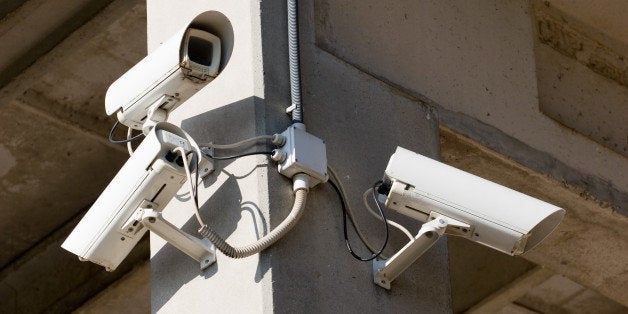
Since Michael Brown's shooting in Ferguson, Missouri, more than 154,000 people have signed a "We the People" petition to the White House to "require all state, county, and local police to wear a camera" to curb misconduct. The Ferguson police force was recently given about 50 cameras, following a national trend toward tech-enabled transparency.
The public may expect cameras to remove bias from interpretation of police behavior. If we can just see what happened, the thinking goes, we'll know who was in the wrong.
But that's not what the research shows. Video (particularly one-way footage) is not an all-seeing, neutral observer, as Florida International University law professor Howard Wasserman has repeatedly pointed out. The most significant impact of bodycams, taxicams, and the like is not reliving the past but, rather, changing behavior in the present. We act differently when we know we're on camera.
That can certainly be a good thing, as researchers found in a field experiment with California's Rialto Police Department. In that study, incidents occurring during shifts without cameras were twice as likely to result in the use of force. Indeed, when officers wore cameras, every physical contact was initiated by a member of the public, while 24 percent of physical contact was initiated by officers when they weren't wearing the cameras.
You'll see similar results -- with an interesting twist -- in a study by Washington University's Lamar Pierce and his coauthors, who looked at employee behavior at almost 400 U.S. restaurants. Technology-based monitoring reduced restaurant employee theft by 22 percent, or about $24 per week. (The effect grew over time, with theft dropping $7 a week the first month and $48 a week by the third month.) But the monitoring actually had a much larger impact on productivity and sales: On average, total check revenue increased by 7 percent ($2,975 per week), and total drink revenue by 10.5 percent ($927 per week). Tips went up, too, by 0.3 percent.
When it became harder for workers to steal money, the researchers observed, people redirected their efforts toward "increasing sales and customer service in order to regain some of that loss." The positive responses -- performance improvements that benefited employees as well as their employers -- were more substantial than the negative behaviors prevented by the monitoring.
So perhaps the real upside of surveillance is the potential to spot and reward good work, not to deter bad conduct.
Other research suggests that, as well. A food-service study, for example, found that dining hall customers perceived greater employee effort and valued the service more when they could watch workers doing their jobs (through video-conferencing software on iPads). The effect was mutual: employees felt more appreciated and, in turn, exerted greater effort when they had a clear view of customers. They completed orders much faster, and customers reported higher food quality. The reciprocal transparency created a positive feedback loop, generating value for both groups.
But transparency can also have an unintended negative consequence: Knowing that their managers and others will closely evaluate and penalize any questionable recorded behavior, workers are likely to do only what is expected of them, slavishly adhering to even the most picayune protocols. That's what has happened in factory production work, where excessive transparency has thwarted both creativity and productivity. Assembly line workers hide fruitful time-saving and cross-training experiments to avoid having to explain them to anyone who might be watching. (See my recent Harvard Business Review article about such tradeoffs.)
If too much transparency kills innovative behavior, how can police departments improve officers' track record on profiling without sacrificing the kind of educated risk-taking and problem solving that's often needed to save lives?
I would argue that the answer lies in focusing on developing good judgment and supporting justice, rather than on enforcing police protocol. Police in Ferguson and elsewhere can learn from companies that use cameras for coaching and development instead of evaluation and punishment. For example, a U.S. trucking company has installed a DriveCam in each of its tractor cabs -- recording what's happening both on the road and in the driver's seat -- to improve fleet safety. Coaches review the footage with the individual drivers, who are receptive to the feedback because they know the videos won't be used against them. (The footage is only shown to managers in situations where drivers willfully break the law.) Even at UPS, which has sensors in its trucks to track workers' every move and reduce delivery times, the master agreement with the Teamsters prohibits management from using the data to discharge employees.
More organizations -- including police departments -- should explore ways of making employee surveillance constructive rather than punitive. Part of the challenge here, of course, is that law enforcement and government agencies are required (for good reason) to be transparent to the public. A certain amount of transparency ensures accountability. But unless it's mitigated with zones of privacy -- areas where workers can receive developmental coaching, as the truck drivers do, without getting dinged for mistakes that generate learning -- it may actually be counterproductive. If every choice, every little misstep, is recorded for all to see and to second-guess, people will quickly learn to play it safe in the worst sense. There aren't many individuals who could work productively under the magnifying glass of an entire country of arbiters -- the Hunger Games version of policing.
That said, in a country where smartphone penetration is now over 70 percent, and almost every smartphone has a video camera, another question is: how much police work is on video already?